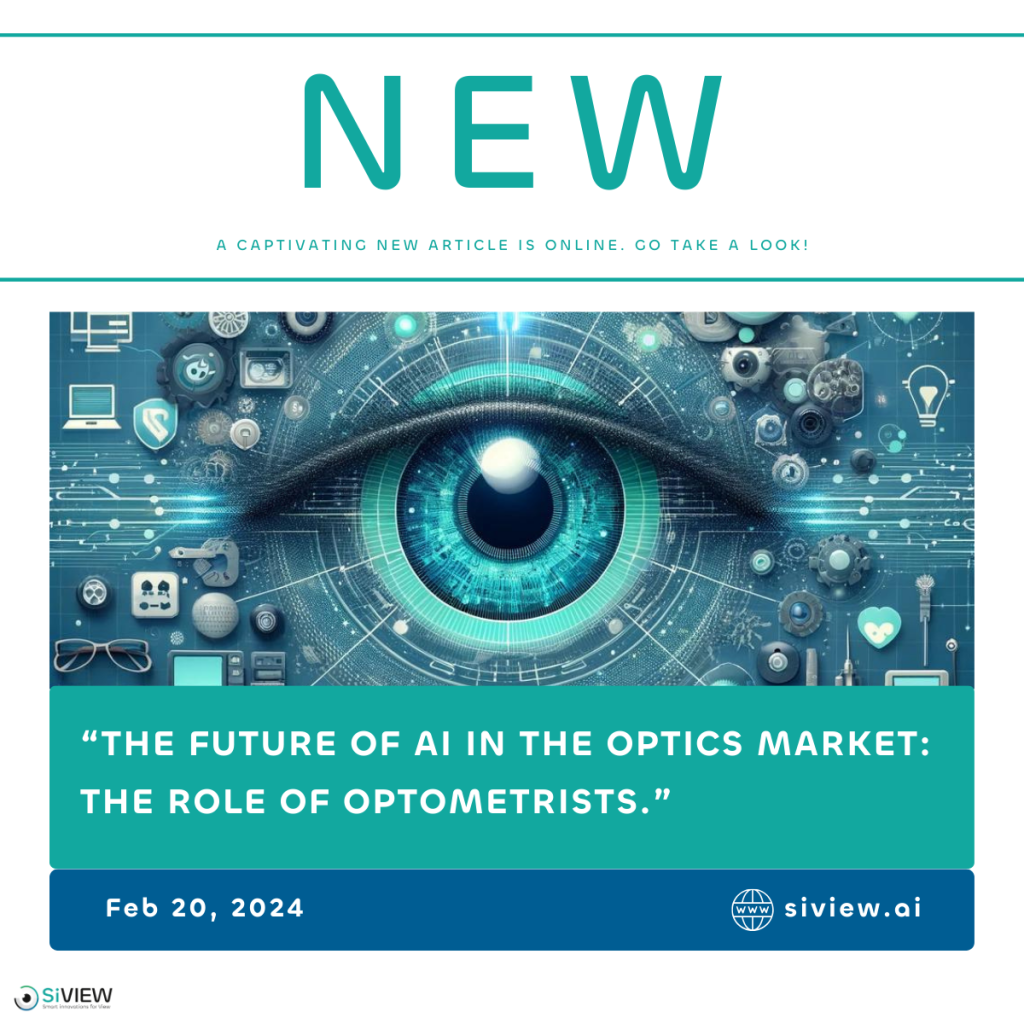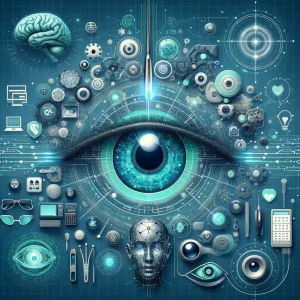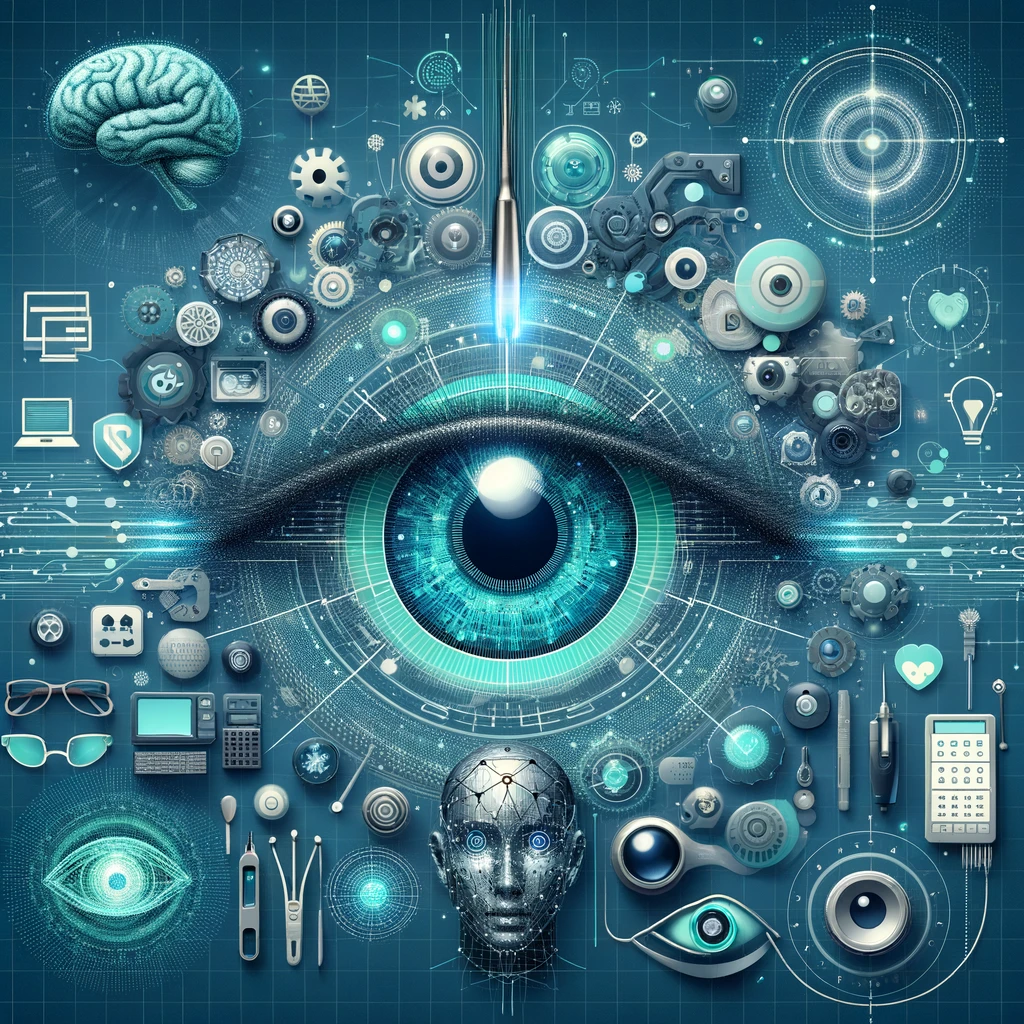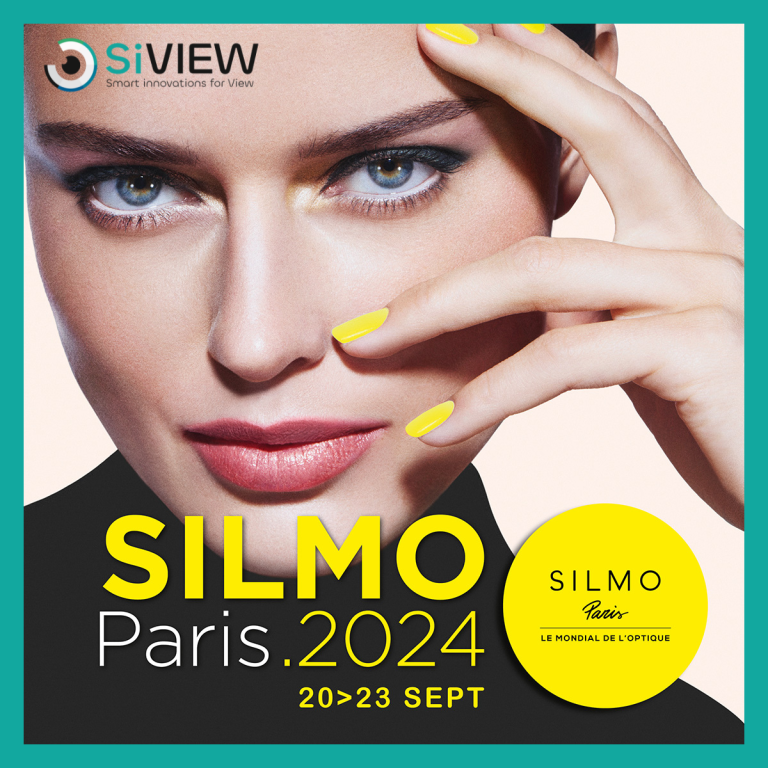

Abinaya Venkatararam from the Karolinska Institutet in Stockholm addressed the topic of artificial intelligence in optometry, sparking a debate on the theme with key industry players.
Artificial intelligence and machine learning, which replicate cognitive functions, are not entirely new but have in fact been used since 1950. In our sector, solutions are used for refraction, myopia control, and the diagnosis of eye diseases. Chatbots answering questions about eye health are also used. AI aims to simulate human intelligence and behavior, and machine learning learns from the data provided to it, performing tasks without any further explicit instructions.
“Deep learning” is when systems can learn on their own. AI in eye health is evolving rapidly. It widely uses multimodal imaging techniques and object markers, whether for detecting refraction errors, diagnosing, and monitoring eye diseases.
Automated subjective refraction has proven to be faster than an optometrist, relatively accurate, and can be a great help. The accuracy of these systems is constantly improving. However, refraction is more than just looking for a glasses correction, and many other factors need to be considered. In the case of myopia, AI can be used for early screening, assessing myopia development, control strategies, and monitoring. AI has proven useful in identifying children at risk of developing high myopia and can be helpful for adjusting OrtoK lenses. It can provide accurate assessments of parameters for the first trial lenses, compared to the traditional method.
For eye diseases such as diabetic retinopathy, glaucoma, and macular degeneration, the quality of images is crucial for AI to function. With the aging population, there is an urgent need for early diagnostics and treatments, and AI is also finding its place in cataract treatment, as explained by Abinaya Venkatararam to the Kongsberg audience on a large screen. For such conditions, large image databases are necessary to train and test algorithms. So far, these algorithms have an accuracy of about 90%.
AI will play a major role in the future of eye health. The greatest clinical challenge concerns the input data: does it reflect the entire population or is it too restricted? Further studies and more approval work are necessary. More data from the population are needed. AI does not find what it is not looking for, which is why human evaluation is also important. AI will be a powerful tool in optometry but will not replace everything. The researcher also issued a warning: be careful where you store and share your images.
Here are some points addressed by participants during the debate that followed on artificial intelligence in the optics industry. Tina Alvær from the optics industry was concerned about the rapid development and emphasized that the industry needed to keep pace. She had herself extensive experience using assistants from England. It is largely about analysis. It must be performed by the optometrist, and this can make the daily life of optometrists more exciting. Svein Tindlund, who holds a leadership position at Specsavers in terms of professional development, has closely followed the development. What he saw in terms of solutions two or three years ago was not enough, but the technology that is now available is quite different. He highlighted that the technology allowing some parts of the refraction to be delegated would make the work of optometrists less routine. In turn, this can make staying an optometrists more attractive, said Tindlund, who himself left the optics industry for some time because it was becoming too routine.
Lotte Guri Sten from the optometry training at the USN (University of South-Eastern Norway) was concerned that we might be creating a new group of optometrists who would only be refractionists:
Svein Tindlund emphasized that part of the technology is developed for the Asian market and does not necessarily fit perfectly in the North. Machines and software have their limitations, but it is important that students see more of these systems and know them.
Tina Alvar stated that it is important to create good conditions for use and that in the end, it is the optometrist as a healthcare professional who is responsible. Image analysis will anyway become more widespread, as already seen in several local hospitals. Lotte Guri Sten believed it was important that new optometrists first gain clinical experience, and there should also be clinical guidelines for the use of AI.
He stressed that delegation is a personal choice. One cannot be forced to delegate. Critical thinking must be demanded, and it is important for optometrists to understand the legislation on this matter. Store owners must also do this. There must also be an evaluation of clinical quality if one chooses to delegate tasks. The optometrist must have knowledge and set limits to know when to use the tool or not.
Economic considerations must also be taken into account as business owners, said Tina Alvar.
Jon Gjelle from the NOF Professional Committee and Specsavers stated that we need to get it right when implementing:
Hans Torvald Haugo from the NOF participated in the last part of the debate and explained that within the European optical organization ECOO, the focus is on patient safety. He also pointed out that the Ministry of Health and Care is concerned that fewer students will choose health professions if new technology changes tasks too much:
Translation of the article “KUNSTIG INTELLIGENS HVOR FORT GAR DET?”, by DAG ØYVIND OLSEN, OPTIKEREN N°6.
In the field of optics, our SiVIEW solution revolutionizes the eye exam by automating part of the process through artificial intelligence (AI). As a company specialized in subjective refraction, we understand the importance of maintaining a trust relationship with patients throughout this technical examination.
SiVIEW was designed with the fundamental idea that AI must be a support, but should never replace human expertise. The optometrist remains at the heart of the process thanks to the integration of detailed phraseology that guides exchanges with the patient. The patient’s responses are entered intuitively into the system, allowing AI to calculate the best test to perform and the most suitable correction, while preserving the essential role of the expert.
We are aware that some optical establishments face a significant influx of patients. SiVIEW allows optometrists to quickly perform an eye exam without compromising the quality of the technical act. Our approach is ethical. It consists of offering a support tool, allowing the optometrist to remain in charge of the eye exam or to delegate this task confidently if necessary. SiVIEW has proven this in a recent clinical study that shows the algorithms’ analysis is as accurate as that of an expert, avoiding the fatigue that repeated exams could cause.
Thanks to the detailed reports generated by SiVIEW, optometrists can not only analyze each case in depth but also delegate the eye exam and collaborate by sharing information with their peers. As Svein Tindlund highlights, this allows optometrists to save time on repetitive tasks and focus on more complex corrections that require thorough care.
Successfully deployed in the Nordic countries, SiVIEW allows our Scandinavian clients to perform more than 1600 eye exams each week. In a world where artificial intelligence is omnipresent, our mission at SiVIEW is to make it invisible, placing it at the service of optometrists without ever losing control of their eye exams.

